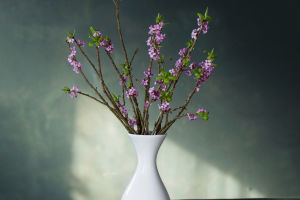Succulents have become incredibly popular for their unique beauty and minimal care requirements.
Whether you’re a seasoned gardener or a beginner looking to add some greenery to your space, succulents offer a fantastic and low-maintenance option. Here’s everything you need to know about planting and caring for these charming plants.
Choosing and Planting Succulents
When selecting succulents, consider choosing a variety of species to create an interesting and diverse display. Popular options include Aloe Vera, Echeveria, and Jade Plant. Succulents generally prefer well-draining soil, so opt for a potting mix specifically formulated for cacti and succulents or create your own by mixing regular potting soil with sand or perlite.
Planting succulents is straightforward. Start by ensuring your pot has drainage holes to prevent waterlogging. Fill the pot with the succulent mix, leaving about an inch of space at the top. Gently remove your succulent from its nursery pot and place it in the centre of the new pot. Fill in around the roots with more soil mix, pressing lightly to secure the plant. Water lightly after planting to help the roots settle in, but avoid soaking the soil.
Daily Care and Maintenance
Succulents thrive in bright, indirect light. Position them near a south- or east-facing window to ensure they get ample natural sunlight. If natural light is limited, consider using a grow light to ensure they get enough exposure. Succulents are adapted to dry environments, so it’s crucial not to overwater them. Water the plants only when the soil is completely dry. During the growing season (spring and summer), aim to water every 1-2 weeks, while in winter, reduce it to once a month or less.
Overwatering is the most common mistake with succulents, often leading to root rot. Always check the soil moisture before watering. If the leaves begin to wrinkle, it’s a sign the plant needs water; if they turn yellow or mushy, it might be a sign of overwatering.
Fertilize your succulents sparingly, about once a month during the growing season, with a diluted, balanced fertilizer. Avoid fertilizing in the winter when the plants are dormant.
Additional Tips
• Pest Control: Keep an eye out for common pests like mealybugs or aphids. If you notice any, gently remove them with a cotton swab dipped in rubbing alcohol.
• Repotting: Succulents generally need repotting every 2-3 years or when they outgrow their pots. Choose a slightly larger pot and refresh the soil mix during repotting.
Lykkers, with minimal effort and the right care, succulents can add a touch of greenery to any space, offering lasting beauty and charm. Enjoy your gardening journey and the delightful addition of succulents to your home!


